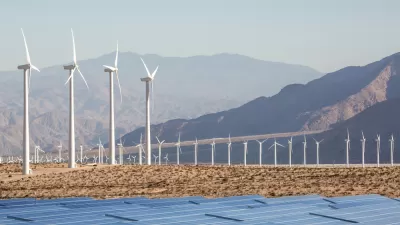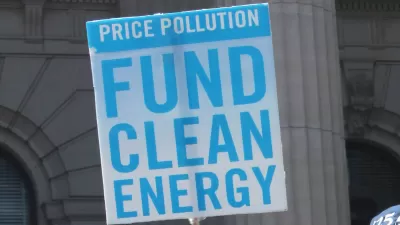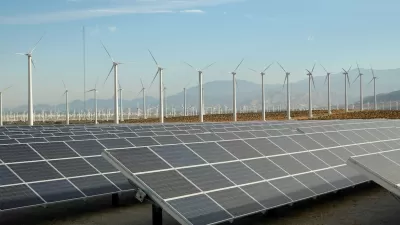Although the United States built less new energy capacity than in the same time period last year, renewable energy dominated the capacity to come online so far in 2014.
According to the Office of Energy Projects at the U.S. Federal Energy Regulatory Commission “a full 92 percent of all new capacity added in the United States so far this year came in the form of renewable energy.” In all, renewables totaled all but 91 megawatts of the country’s 1,150 megawatts of new power capacity.
Stephen J. Smith reports on the success of renewables so far in 2014 for Next City, providing a break down of the new capacity: “Solar took home the crown with half of the new capacity, while wind picked up the majority of the rest, with 37 percent of the added capacity. The only major non-renewable source to add capacity was natural gas, which added a measly 90 megawatts of generation capacity.”
New York and California were the states that added the two largest renewable energy projects, but don’t forget that Texas has been busy this month breaking records for wind power generation.
FULL STORY: 92 Percent of New U.S. Power Plant Capacity This Year Came from Renewables

Maui's Vacation Rental Debate Turns Ugly
Verbal attacks, misinformation campaigns and fistfights plague a high-stakes debate to convert thousands of vacation rentals into long-term housing.

Planetizen Federal Action Tracker
A weekly monitor of how Trump’s orders and actions are impacting planners and planning in America.

Chicago’s Ghost Rails
Just beneath the surface of the modern city lie the remnants of its expansive early 20th-century streetcar system.

Bend, Oregon Zoning Reforms Prioritize Small-Scale Housing
The city altered its zoning code to allow multi-family housing and eliminated parking mandates citywide.

Amtrak Cutting Jobs, Funding to High-Speed Rail
The agency plans to cut 10 percent of its workforce and has confirmed it will not fund new high-speed rail projects.

LA Denies Basic Services to Unhoused Residents
The city has repeatedly failed to respond to requests for trash pickup at encampment sites, and eliminated a program that provided mobile showers and toilets.
Urban Design for Planners 1: Software Tools
This six-course series explores essential urban design concepts using open source software and equips planners with the tools they need to participate fully in the urban design process.
Planning for Universal Design
Learn the tools for implementing Universal Design in planning regulations.
planning NEXT
Appalachian Highlands Housing Partners
Mpact (founded as Rail~Volution)
City of Camden Redevelopment Agency
City of Astoria
City of Portland
City of Laramie





























